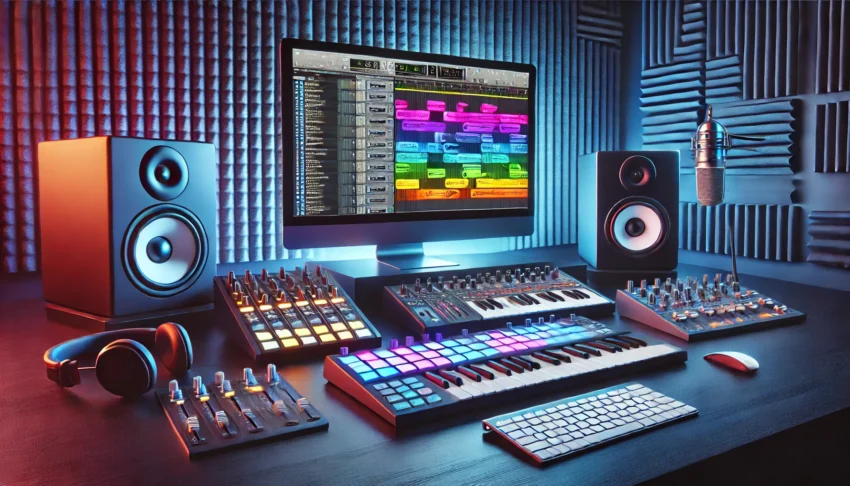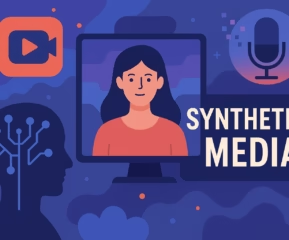Music production has transformed dramatically over the past few decades. Gone are the days when creating professional-quality tracks required expensive studio time and bulky analog equipment. A DAW is short for “Digital Audio Workstation,” which is a software application utilized by music producers to record, edit, and produce audio tracks, essentially a studio in your computer, enabling you to record, edit, and mix music.
Understanding the Core of Digital Audio Workstations
A digital audio workstation is a piece of music production software that lets you compose, record, and produce music. Loaded with audio manipulation features, a DAW also lets you mix and edit. Think of it as your complete creative command center where every aspect of music production happens on your computer screen.
Modern DAWs serve as comprehensive platforms that combine multiple studio functions into one cohesive environment. Musicians can layer instruments, apply effects, adjust timing, and polish their final mix all within the same software. This integration has democratized music production, allowing bedroom producers to achieve results that once required professional studios.
The software architecture includes several key components working together: audio recording capabilities, MIDI sequencing, built-in virtual instruments, effect processors, and mixing boards. Each component seamlessly integrates with the others, creating a workflow that mirrors traditional studio processes while offering digital advantages.
Essential Features That Define Professional DAW Software
Professional-grade DAW software includes several fundamental features that separate amateur tools from industry-standard applications. Multi-track recording allows simultaneous capture of multiple instruments or voices, enabling complex arrangements and full band recordings.
MIDI sequencing capabilities let producers program virtual instruments with precise control over timing, velocity, and expression. This feature proves invaluable for creating electronic music or adding programmed elements to acoustic recordings. The latest version of the DAW arrived as FL Studio 2024 (the follow-up to version 21), and with it comes a host of new music-making goodies that includes synth plugins, effects, AI-powered MIDI tools and more.
Audio editing tools provide sample-accurate precision for cutting, copying, and arranging recorded material. Time-stretching algorithms maintain audio quality while adjusting tempo, and pitch-shifting keeps recordings in tune without affecting timing.
Built-in effects processing includes reverb, delay, compression, EQ, and countless other processors that shape your sound. Many DAWs also support third-party plugins, expanding your sonic palette with specialized tools from various developers.
Automation features allow parameters to change over time, creating dynamic mixes where volume, effects, and panning evolve throughout the song. This capability adds professional polish and movement to static recordings.
Popular DAW Options Across Different Price Points
The DAW market offers solutions for every budget and skill level. Professional options like Pro Tools, Logic Pro, and Cubase provide comprehensive feature sets used in commercial studios worldwide. These applications typically cost several hundred dollars but include everything needed for professional production.
Already one of the best free DAWs around – and certainly one of the most fully-featured and least restrictive – Tracktion Software Corporation’s latest update makes Waveform Free even better. Offering an unlimited track count and plugin support, Waveform Free has a new welcome screen.
Free alternatives like Reaper (with its extended trial), GarageBand (for Mac users), and various open-source options provide excellent starting points for beginners. These tools often include surprising depth and capability despite their affordable or free pricing.
Logic Pro for iPad literally puts the DAW into your hands, turning it into an instrument of its own. The best part is that everything you make in Logic Pro for iPad can easily be ported over to the desktop version of Logic Pro for mixing and post-production applications.
Cloud-based DAWs represent the newest category, allowing collaboration across different locations and reducing hardware requirements. These platforms store projects online and provide access from various devices, perfect for mobile creativity and remote collaboration.
Getting Started with Your First DAW Experience
Choosing your first DAW depends on your musical goals, budget, and technical comfort level. Beginners should prioritize user-friendly interfaces and comprehensive learning resources over advanced features they may not immediately need.
Start by downloading free trials or lite versions to test different workflows. Each DAW has its own approach to organizing projects, and finding one that matches your thinking process will accelerate your learning curve.
Focus on mastering basic functions before exploring advanced features. Learn to record audio, program basic beats, apply simple effects, and create rough mixes. These fundamental skills transfer between different DAW platforms and provide the foundation for more complex production techniques.
Online tutorials, user manuals, and community forums provide invaluable learning resources. Most DAW manufacturers offer extensive documentation and video tutorials covering everything from basic operation to advanced production techniques.
Practice regularly with simple projects before attempting complex productions. Recording cover songs, creating basic beats, or experimenting with virtual instruments builds familiarity with your chosen software while developing musical skills.
The Future of Digital Audio Workstation Technology
The global digital audio workstation market size was estimated at USD 4,103.4 million in 2024 and is projected to reach USD 6,650.2 million by 2030, growing at a CAGR of 8.6% from 2025 to 2030. This growth reflects increasing adoption across various industries beyond traditional music production.
Artificial intelligence integration represents a significant trend, with AI-powered composition tools, automatic mixing suggestions, and intelligent audio repair becoming standard features. These technologies assist both beginners and professionals in achieving better results more efficiently.
Cloud computing continues expanding DAW capabilities, enabling real-time collaboration between musicians across different continents. This technology removes geographical barriers from creative partnerships and allows seamless project sharing.
Mobile DAWs are becoming increasingly sophisticated, with tablet and smartphone applications offering surprisingly complete production environments. This portability allows musical inspiration to be captured and developed anywhere, anytime.
Virtual and augmented reality integration may revolutionize how we interact with music production software, providing immersive mixing environments and intuitive control methods that feel more natural than traditional mouse and keyboard interfaces.
Digital audio workstations have transformed from simple recording tools into comprehensive creative environments that empower musicians worldwide. Whether you’re a complete beginner or seasoned professional, there’s never been a better time to explore the possibilities that DAW software offers for musical expression and production.
- What Synthetic Media Is and How It’s Transforming Digital Content? - November 4, 2025
- What is a Personal Digital Assistant? - September 6, 2025
- What is a Digital Audio Workstation? - September 3, 2025


